| |
 |
Leon's Theory about
the Origin of
Koreans
and the Korean Language
© 2007-present, by Leon of Leon's
Planet dot com |
 |
Who was the first Korean human?
| Ung-Nyeo |
Or |
Dan-Gun |
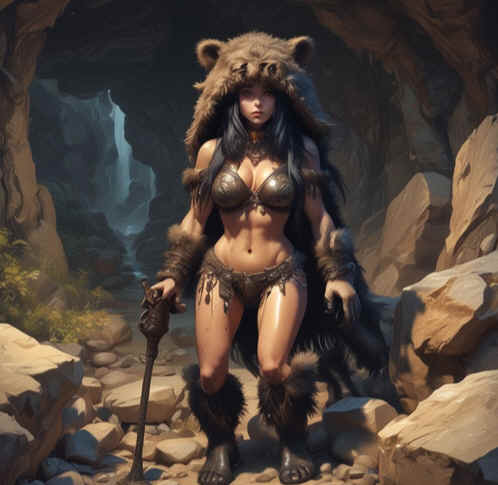 |
Or |
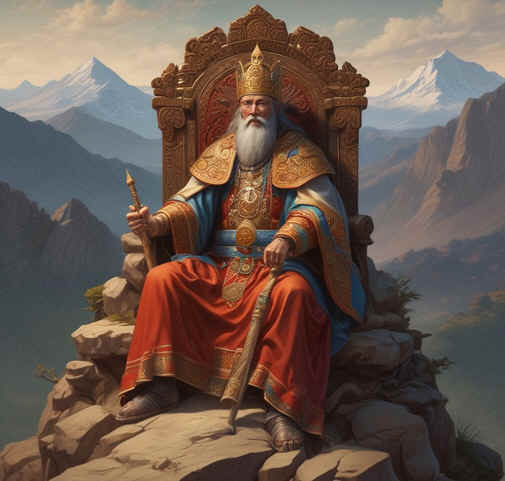 |
image credit
image was created by A.I. and Leon.
©2025 |
|
image credit
image was created by A.I. and Leon.
©2025 |
In my opinion, it was Ung-Nyeo who was the first human,
because I believe that the egg came before the chicken--
you know--
Which came first; the chicken or the egg?-question.
Well, I think the answer to that question is that the egg came first, and
Ung-Nyeo created the egg. Dan-Gun was her son.
BUT, I'll let you decide.
Read the Legend of DAN-GUN below and make up your own mind.
P.S. permission to copy any of my images is granted so long as
you give credit and link back to my site.
Foreword / History of this page
My research is a work in progress, but as of 2013, I believe I have finally
solidified my own theory on the origins of the Korean people and their language.
After 2015, interest in this page has waned. Probably got blocked in some algorithm.
Now, my website seems to get very few hits (and that goes for all pages; not
just this one). It is my hope, however, that visitors will benefit from my
years of research and find the information on this page of value.
Introduction
|
Encyclopedia
Britannica (Concise) has an article entitled "Korean
Language" wherein one may read the following:
"Korean is not closely related to any other language, though a distant genetic kinship to Japanese is now thought probable by some scholars, and an even more remote relationship to the Altaic languages is possible. Korean was written with Chinese characters to stand in various ways for Korean meanings and sounds as early as the 12th century, though substantial documentation is not evident until the invention of a unique phonetic script for it in 1443. This script, now called Hangul, represents syllables by arranging simple symbols for each phoneme into a square form like that of a Chinese character. Grammatically, Korean has a basic subject-object-verb word order and places modifiers before the elements they modify."
Please Note: I have amassed
evidence that will tell us exactly where the Koreans came from. Read
on, my reader.
MAJOR
PREMISE: My premise for this page is that the analysis of the
written histories of peoples of the Far East, analysis of the
languages of the Far East, and analysis of the cultures of the Far East
will provide some insight to the origins of the Korean people.
THE KOREANS
THEMSELVES: have an oral tradition that their ancestors came from
Mongolia. After 10 years of living in Korea (1995-2006), it was my
deep desire to go to Mongolia in order to see for myself if there could be
any truth in such a belief. In 2010, that desire became a
reality. I lived in Mongolia for 5 years. What I
have found is that the Mongolian language does bear some similarities to
the Korean language. More detailed analysis below. Physically,
the Mongolians are much taller, but similar in girth. Korean men are
short and stocky. Incidentally, I have also lived in Vietnam.
The people of Vietnam share many similarities with the Korean
people. For one, the Vietnamese are a smaller (shorter)
people. I have recently come to the conclusion that the Korean
people are a hybrid of Mongols and Viets. The evidence is laid out
in the "tome" below. Please enjoy!
|
My
Other
Korean-related
pages:
My
Expat Blog
(Re: My 10-yr Life in Korea)
Korean
Food Translated
(fairly comprehensive list)
Korean
Origins
( This
page!)
Konglish
1
(Konglish Interlanguage)
Konglish
2
(Konglish Lexis)
Konglish
3
(Konglish Pronunciation)
Korean
Dictionary Errors
(quite the list)
Korean
Language Lessons
(by Leon)
|
Table of Contents:
Linked
Roman
Numerals |
Titles |
| I. |
History of Korea
("unofficial" & "official")
|
| II. |
2 Theories (Northern and Southern) |
| III.
|
My Conclusion
(about the origin of the Korean people and their language) |
| IV. |
DNA Connection between Koreans & Mongolians
AND, possible linguistic links! (Updated
June 23, 2013)
|
| V. |
Japanese-Korean-Mongolian Connection |
| VI.
|
My Final Theory
(about origin of Korean PEOPLE, and all humans) |
Very Brief History of Korea
(w/ Comparison to Vietnamese History)
Ancient Period
| Preface:
Most historians say that the Korean peninsula was
inhabited by Paleo-Siberians until around 2333 BC, when they were forced
out. [I think this is non-sense, and I'll explain why later]. The
"official" history of Korea begins at 2333 BC, with Dan-Gun, but I'm
not going to start with the "official" history. I'm going to
start with the UNofficial history, which is considered to be apocryphal by
mainstream historians. [But, mainstream historians don't know
everything, in
my book]. |
The Dong
Yi (Lit. East Barbarians)
[What Western academics
call the PaleoSiberians and the Mongol Tribes]
7193 BC Han-In establishes a country
in what is now known as the Mongolian-Siberian territory, called Han-guk
(The Han Country).
[Ah! Eureka! Please
see over there for explanation --->>>>].
Han-guk [King's
Country]
Han guk was comprised of twelve nations, also known as
"DongYi" (Eastern Barbarians).
[I don't if the names of
the twelve tribes are recorded anywhere, but I imagine that those 12
tribes included the Buryats, Mongols, Manchurians, Huns, Tibetans,
Han-Chinese, Han-Koreans (possibly related to the Koryaks), also related
to the ChukChi, etc.]
7193 BC - 3898 BC Han-guk was ruled by seven in succession by seven
Han-In's.
[Han-In was a title of a ruler, rather than a personal
name].
Question: If there were
12 tribes, and presumably each tribe had a leader (king?), then was
Han-In the Emperor? I don't know the answer to that question.]
|
Interesting
Side Notes:
Koreans have lost the meaning
of "Han" and today think that it is just the name of the
people of "Han" (which was both the name of the land, and the
title of the first kings).
Today, the Korean language is
70% from the Chinese language, called "Sino-Korean". And
today, the Korean the word for "king" is borrowed from Chinese:
namely, "wang". I have searched for decades to find the original Korean word
for "king," and now I've found it!
After living
in Mongolia for five years, where the word for king is "Haan,"
it became clear that the meaning of "Han" is king.
So, "Han-In" = King
"In"
"Han-guk" = King's country
"Hwan-ung" = Han?
Ung (King? of Power)
|
| This
part (below) is also considered apocryphal by mainstream historians, but
please compare the Vietnamese history! |
|
  
Korean History
3898 BC: Establishment of Bak-dal
Nara.
[Bak-dal is a possible
cognate with Lake Baikal, the largest lake in the region by
surface area, and most
voluminous lake in the world.]
3898 BC - 2333 BC
There were
18 Hwan-ungs, each ruling in
succession of the other.
Hwan-ung was a title, not a
name.
The last Hwan-ung begot the first Dan-gun.
(Source) |
  
Vietnamese
History
Vietnamese legend tells of a dragon lord
named Lạc Long Quân and a mountain fairy named Âu Cơ who
had 100 sons together. As the parents belonged to different realms, they parted
ways, each taking 50 sons with them.
The eldest son of Lac Long Quan came to power in 2879 BC and became known as
Hùng Vương,
ruling an area covering what is now North Vietnam and part of southern
China. He founded the Hồng Bàng Dynasty, which lasted until 258
BC.
Each successor of the original Hung Vuong took the title of Hung Vuong.
There were 18 Hung Vuongs in all. (Source: Wikipedia)
To this day, in Hanoi City, two of the
longest, main roads in the city are called, "Lac Long Quan"
and "Au Co". I learned the story of Lac Long Quan and Au
Co from my son, who learned it at school when we were living in VietNam. [I
lived in Vietnam]. |
| Leon's
Comment:
so the dates don't match up? So what?
Korean: 18 Hwan-Ung;
&
Vietnamese: 18 Hung-Vuong!!!!!!
(That cannot be a mere coincidence)
Meanings:
Korean:
Hwan-Ung
= Eternal-Power
Vietnamese:
Hung-Vuong
=
Power
King
To me, the similar history and
similar names suggests that there
is a strong connection between the Korean people and the Vietnamese people.
Perhaps the smaller Vietnamese people mixed with the larger Mongolian
people, producing a race of mid-sized Korean people. |
|

Furthermore: Where did Korean chili peppers
come from?
The Koreans
grow and use red-hot chili peppers in their Korean
food, which peppers are NOT
indigenous to the Korean peninsula. Where did they get the peppers
from? I can assure you that they did NOT get them from
Mongolia! Mongolian food does NOT use chili peppers at all.
(I know. I lived in Mongolia for 5 years).
All the Korean restaurants in Mongolia dilute the spiciness of their
food for the Mongolian palate. They must have gotten the red chili
peppers from South-East Asia, specifically Vietnam! I know what
you are thinking, it could just be the result of trade; however, trading
means the mixing of languages, and sometimes (rather, quite often) the mixing of
blood.
|
This is where the
official history begins (still
called "ancient period")
| 2333 BC
Founding of old Jo-Seon (called
Chao Xian in Chinese) by Dan Gun.

Now, you need to understand, that it is
recognized by all Korean scholars that Dan Gun was a real person, and the
founder of the Korean ethnicity. However, as with any great, ancient
leader, there exists some legends about him (which are not necessarily
accepted by historians, but are extremely fun to explore).
Therefore, I give you....
The Legend of Dan
Gun
MAIN CHARACTERS:
(1) Hwan-In(Korean: 환인
) (Chinese: 桓因, "Huan Yin")
(English: Eternal Causer) was the King
of Heaven
(2) Hwan-Ung
(Korean: 환웅 ) (Chinese: 桓雄,
"Huan Xiong") (English: Eternal Power) was the son
of Hwan-In
(3) Ung-Nyeo (Korean: 웅녀
) (Chinese: 熊女,
"Xiong Nu") (English: literally "Bear Woman")
was the first human in my opinion and wife to Hwan-Ung (a god).
(4) Dan-Gun (Korean: 단군)
(Chinese: 檀君, "Tan-Jun")
(English: Sandalwood Monarch) was the son of Hwan-Ung
NOTE: It is fitting that Dan-Gun be number four (Four also means
"death" in Korea). Dan-Gun became the first mortal
human. Thus, death came into the world.
PLOT:
Hwan-In's son, Hwan-Ung, asked his father to be sent down to earth to govern his own
land at Taebaek-san
태백산 / 太白山)
[Great White Mountain] as the best site, opened heaven (Gae
Cheon Jeol) and sent down
his son to benefit humanity (hongik-ingan). Shinshi,
(신시, 神市,
'city of the gods'). The noble spirits of Wind,
Rain and Clouds were his ministers. A government was established
with 360 departments (interesting number!!!!) to rule with laws and
moral codes about agriculture, grain-storage, hunting, fishing, sickness
and medicine, education, the arts, family-life, etc.
A bear and a tiger both came
to Hwan-Ung and prayed (begged) to become human beings. The
Heavenly Prince decided to give them a chance, and gave them a
bundle of mugwort (wormwood) and twenty bulbs of garlic and told them
that if they ate only these sacred food and stayed in the cave (out of
the sunlight) for one hundred days then they would become human.
The tiger shortly gave up in impatient hunger and left the cave. The
bear remained and after 21 days was transformed into a woman.
The bear-woman, Ung-Nyeo,
(웅녀; 熊女)
was very grateful and made offerings to Hwan-Ung at the stone
altar by the sacred sandalwood tree on the peak. She had no husband, however,
and prayed for a son. Hwan-Ung was moved by her prayers. So,
he transform himself into a human man, and mated with her.

Image created by A.I. and Leon. "Pregnant Ung-Nyeo".
Permission to copy any of my images is grant so long as you give me
credit and link back to my website.
Ung-Nyeo gave birth to a son, who was named Dan-Gun
Wang-Geom , the first
mortal Korean human, and the first King of Korea.
ALL OF THE CHARACTERS:
| Korean |
Chinese |
English |
Viet |
환인
Hwan-In |
桓因
Huan-Yin |
Eternal Causer |
Lac Long Quan |
환웅
Hwan-Ung |
桓雄
Huan-Xiong |
Eternal Power |
雄王
Hung Vuong
(Power King) |
웅녀
Ung-Nyeo |
熊女
Xiong-Nü |
Bear Woman |
X |
단군
Dan-gun |
檀君
Tan-Jun |
Sandalwood Monarch |
X |
왕검
Wang-geom |
王儉
Wang-jian |
King-husbandly
or
King of moderation |
X |
My
source for the translations: Google translate.
My source
for the legend of Dan Gun: SanShin.org
Dan-Gun founded the first Korean kingdom, with its capital nearby what
is now Pyeong-Yang and then moved to Asadal,
probably at Mt. Guwol-San
in Hwang-Hae Province, and named it Joseon,
in the 50th year of the reign of the Emperor Yao (China’s
mythical sage-emperor ). Dan-gun reigned over Joseon (Now called
"Go-Jo-Seon")
for 1,500 years. [Leon's note: There are some scholars who suggest
that Dan-Gun was merely a title and that there were many Dan-Guns during
that 1500-year period of time].
1122
BCE
At the end of the Dan-gun Dynasty, in
the year 1122 BCE, we had the founding of King Wu San-Shin
[a Mountain-spirit] at the age of 1,908.
Side
Note-1:
I lived on an Island, called
Kang-Hwa-Do, near the DMZ, which has a
mountain, the top of which bears an ancient monument and it is told by
the islanders that Dan Gun actually hid out there long ago. To
this day, every October 3rd (Open-Heaven Day), the islanders climb to
the top of the mountain, which takes shortly over an hour, and perform
ancient rituals to commemorate the legendary founder of the JoSeon
Kingdom. ALSO, it must be noted that some scholars suggest that
"Dan-Gun" may have actually been a title, and that their were
more than one 'Dan-Gun' during the 1,908-year reign.]
Side
Note-2:
Koreans were originally called "Jo-Seon Jeok" in the Korean language and
"Chao Xian Jo" in the Chinese language. The ethnic
Koreans that live in China are still called "Chao Xian Jo" by the
Chinese. The word "Korea" comes from the "Goryeo"
Dynasty which came later. Incidentally, the English pronunciation
of "Korea" is remarkably similar to the Korean pronunciation
of "Goryeo".
1122 BC Alleged arrival of
Kija from Shang China
(contested by historians)
c. 1000 BC Start of bronze working in
Liaodong peninsula
311 BC Invasion of Qinkai of
Yen, loss of 2000-li territory
194 BC Wiman usurps the throne of
Joseon's King Jun
108 BC Invasion by Emperor
Wudi of the [Chinese] Han Dynasty
and establishment of the Four
Commandaries
82 BC Commandaries Zhenfan and
Lindun eliminated
75 BC Xuantu
commandary removed from peninsula
(Source) |
Another source gives some added
information around this time period
| It has been discovered in recent
archeological excavations that the early race called Paleosiberians
lived in the Korean peninsula and Manchuria before the Altaic race
migrated to these areas. The PaleoSiberians, who include the Chukchi,
Koryaks, Kamchadals, Ainu, Eskimos etc., were either driven away to the
farther north by the newly arrived race; Or, they were assimilated by the conquerors
when they came to the Korean peninsula (which is partly what I, Leon, believe).
It is believed that the
migration of the new [Tungusic] race towards the Korean peninsula took place around
4000 BC. Nothing is known about the languages of the earliest settlers.
After migration, some ancient Koreans settled down in the regions of
Manchuria and northern Korea while others moved farther to the south.
Many small tribal states were established in the general region of
Manchuria and the Korean peninsula from the first century BC to the
first century AD. The ancient Korean language is divided into two
dialects: the Puyo language and the Han language. The Puyo language was
spoken by the people of tribal states such as Puyo, Kokuryo, Okcho and
Yemaek in Manchuria and northern Korean. The Han language was spoken by
the people of the three Han tribal states of Muhan, Chinhan and Byonhan
which were created in southern Korea.
(My source link is not longer functioning)
|
End Ancient Period.
start... "Three-Kindoms Period":
From
75 BC to 676 AD
There were more than three kindgoms
to begin with, like the ones mentioned above, but there was a lot of fighting,
and war-mongering, and there were three kingdoms that dominated during this
period: Shilla, Gogeuryeo, and Baekje. In the end (676 AD), Shilla dominates and
unifies all.
start...
Shilla Period: From 676 AD to 935 AD
Shilla ruled the whole peninsula.
Then, in 935
A.D. the "Koryo" [old Romanized
spelling] Period began,
or "Goryeo"
[new Romanized
spelling] Period,
(which is where we get the name
"Korea").
|
Two Theories
(not mine)
on the origins of the Korean
Language
By Nam-kil
Kim
|
One day, I typed
"Origin of Korean Language" in a search engine (Google), and this is what I found:
| TWO THEORIES ON THE ORIGIN OF THE
KOREAN LANGUAGE
SOURCE:
<article> by
Nam-kil Kim.
Intro:
For a long time scholars have tried to associate the
Korean language to one of the major language families but have not been
successful in this venture." There have been many theories about
the origin of the Korean language, but two have been most popular: The
Southern and Northern Theories.
Southern Theory PART 1 in a nutshell:
"...it was strongly advocated by the British
scholar Homer B. Hulbert at the end of nineteenth century. Hulbert's
argument was based on the syntactic similarities of Korean and the
Dravidian languages. For instance, both languages have the same
syntactic characteristics: the word order subject-object-verb,
postpositions instead of prepositions, no relative pronouns, modifiers
in front of the head noun, copula (BE VERB) and existential (EXIST VERB)
as two distinct grammatical parts of speech etc."
Southern Theory PART 2 in a nutshell:
"The other version of the Southern theory is the
view that Korean may be related to the Austronesian languages (which
includes South-east Asia, like Vietnam). There are
some linguistic as well as anthropological and archeological findings
which may support this view. The linguistic features of Korean which are
shared some Polynesian languages include the phonological structure of
open syllables, the honorific system, numerals and the names of various
body parts. The anthropological and archeological elements shared by
Koreans and the people in other regions of the South Pacific are rice
cultivation, tattooing, a matrilineal family system, the myth of an egg
as the birth place of royalty and other recent discoveries in
Paleolithic or pre-ceramic cultures."
Northern Theory in a nutshell:
"The Northern theory is the view that Korean is
related to the Altaic family. The Northern theory stipulates that the
Tungusic branch of Altaic tribesmen migrated towards the south and
reached the Korean peninsula. The Tungusic languages would include two
mayor languages: Korean and Manchu. Korean is similar to the Altaic
languages with respect to the absence of grammatical elements such as
numbers, genders, articles, fusional morphology, voice, relative pronouns
and conjunctions. Vowel harmony and agglutination are also found in
Korean as well as in the Altaic languages."
Kim, Nam-kil |
|
NOTE: Vietnam
history supports the Southern Theory (but keep in mind that BOTH are
probably correct)....
Vietnamese legend tells of a dragon lord
named Lạc Long Quân and a mountain fairy named Âu Cơ who
had 100 sons. As the parents belonged to different realms, they parted
ways, each taking 50 of the 100 sons to their respective homes.
The eldest son came to power in 2879 BC and became known as Hùng Vương,
ruling an area covering what is now North Vietnam and part of southern
China. He founded the Hồng Bàng Dynasty, which lasted until 258
BC.
Each successor of the original Hung Vuong took the title of Hung Vuong.
There were 18 Hung Vuongs in all. (Source: Wikipedia)
Personally, I find this VERY
interesting, because Korean history teaches something very similar.
According to "apocryphal" Korean history, from 3898 BC - 2333
BC There were eighteen Han-ungs, each ruling in succession of the other.
(Han-ung was a title, not a name). The last Han-ung gave birth to the
first Dan-gun. |
My Conclusion
(about origin of Korean People and the Korean Language)
I'm a
thinker. I ponder things that interest me a lot. I try to figure
things out. And what makes sense to me after all the research that I've
done, is that the Paleo-siberians (DongYi/Tungusic Tribes) never left the Korean
peninsula (at least not all of them). I can see why they think that some
left, but not necessarily all of them. If
you look below, you will see that there is a very close genetic tie between the
Tibetans, Siberians, Mongolians, Koreans and Japanese. I agree with the idea
that DongYi {i.e., Tungusic: (Siberian, Manchurian, Mongol)} tribes migrated down into
the Korean peninsula, and Austronesians migrated from Vietnam, and
there was a mixture of races (and languages). I don't understand why it
has to be one way or the other. Why can't BOTH the Northern and Southern
theories be true?
THE
BOTTOM LINE:
Koreans
are in my estimation a combination of Tungusic (Mongolians) and Austronesian
(Vietnamese) ethnicities. Their language is a mixture of Mongolian
grammar, Chinese and Vietnamese lexis.
 MORE Evidence
MORE Evidence

Koreans
claim that they are related to the Mongolians because all Koreans are born with
a blue spot on their body (which goes away after a few years). In fact,
they call it the "Mongoli Jeom" (Mongolian Spot).
Unfortunately, the blue spot is a common thing all over Asia, so
this is not enough evidence to claim a specific genetic link. But, then
again, the Mongols (during the Mongol empire under Genghis Khaan) spread their "seed" (DNA) all over
the Asian continent. It's just not enough evidence to be
conclusive.
So, let's move on to the possibility of a linguistic link
between to the two languages (and other languages of the region).
Please
Note that the Mongolian grammar and the Korean grammar is of the same syntax
(subject-object-verb). As far as lexis goes, I have done extensive
research, and here is what I've found. Possible
cognates will be highlighted in similar colors.
 I just added Hebrew, because I'm seeing some similarities between Mongolian and
Hebrew
I just added Hebrew, because I'm seeing some similarities between Mongolian and
Hebrew
| Numbers |
| Category |
English |
Japanese |
Korean |
Manchu |
Mongolian |
Hebrew |
Vietnam~ |
| Numbers |
one
two
three
four
five
six
seven
eight
nine
ten |
hitotsu
hutatsu
mittsu
yottsu
itsutsu
muttsu
nanatsu
yattsu
kokonotsu
to |
hana
dul
set
net
taseot
yeoseot
ilgeop
yeodeol
ahop
yeol |
emu
juwe
ilan
duin
sunja
ninggun
nadan
jakvn
uyun
juwan |
nek
hoyeur
gorow
deureu
tau
zorga
dolo
naim
yes (yus)
arau |
echad
shtaim
shalosh
arba
hamesh
shesh
sheva
shmone
tesha
eser
Source
|
mot
hai
ba
bon
nam
sao
bai
tam
chin
mui |
|
Interpolation (Notes
and Credits / Sources of Information):
Amazingly, I see very little similarity in the numbering systems
of the Far East! I mean even most European languages will have
similarities in the numbering systems. Why wouldn't the numbering
systems of the Far East be similar??? RE:
Korean
To my surprise, the Korean numbering
system bears absolutely NO similarity with any other numbering systems
of the region. (Please note that I am fully aware
that the Korean language has another numbering system which is based
upon the Chinese numbering system, as does Japanese). See
my Korean language page for more details. Some people have
asked me what my sources were. For English and Korean, the source
is myself. I am native English speaker and I lived in Korea for ten
years (see
my blog), and became quite fluent in the language. RE:
Vietnamese
I
also lived in Vietnam for a year (see
my blog) and I knew the numbers, but most of the rest had to be looked up in
a bilingual lexicon. RE:
Mongolian
I lived in Mongolia for 5 years (see
my blog), and I knew a lot of the words, the rest had to be looked
up in various bilingual lexicons. The best English-Mongolian online
dictionary is Bolor. RE:
Tibetan
I used to have Tibetan on here, but there just weren't any similarities,
so I have replaced the Tibetan column with a Hebrew column, because
recently I have been amazed to see the similarities between Hebrew and
Mongolian for many words. RE:
Japanese
I don't remember where I got
the Japanese words, but a native speaker named Yoko helped me fix the
Japanese mistakes (but what I really want is the pure, native,
proto-Japanese words (before sino-Japanese words were
"borrowed" from Chinese). RE:
Manchurian
As for the Manchurian
vocabulary, I had to look very hard for the Manchu words. One
Manchu site is here.
Here is another online
English-Manchu Dictionary. RE:
Hebrew
Main source: Do
it in Hebrew .
|
| Family |
| Category |
English |
Japanese |
Korean |
Manchu |
Mongolian |
Hebrew |
Vietnam~ |
| Family |
family |
ka-zoku |
ga-jeok |
? |
ger bul |
bayt |
gia dinh |
| Family |
mother |
okasa |
omoni |
? |
ej |
em |
? |
| Family |
mom |
haha |
omma |
eme |
ejee |
ima |
me |
| Family |
father |
? |
aboji |
? |
av |
av |
? |
| Family |
dad |
chichi |
abba |
ama |
avaa |
aba |
cha
/ bo |
| Family |
grandma |
sobo |
halmoni |
? |
emee* |
sava |
ba~ |
| Family |
grandpa |
sohu |
haraboji |
yeye |
oboo (eubeu) |
saba |
ong~ |
| Family |
big sister |
ane |
eoni (f->f)
nuna (m->f) |
? |
Egch
But they usually say:
"Anaa" or
"Anee" |
Ah'ot |
chi (gai) |
| Family |
big brother |
ani |
obba (f->m)
heong (m->m) |
agee |
Akh; but
Mongolians usually say:
"Akhaa" or
"Agaa" |
Ah'
Ah' is pronounced the same as Akh. |
anh (trai) |
| Family |
little sister |
imouto |
dong
saeng |
? |
duu |
? |
em gai |
| Family |
little brother |
otouto |
dong
saeng |
? |
duu |
? |
em trai |
| Family |
wife |
kanai
tsuma |
anae
sek shi |
sargan |
ekher, or
ger gii
(literally: home's light) |
ra'yah
ishah
|
vo |
| Family |
husband |
shujin
otto |
nam-pyeon,
(literally: male side) or
uri egi abaa
(literally: my baby's dad) |
? |
neukheur, or
avaa-li er
(literally: fatherly man) |
ba'al
(literally: lord of the house)
|
nguoi chong |
| Family |
daughter |
musume |
ddal |
? |
okhin |
bat |
con gai |
| Family |
son |
musuko |
adeul |
? |
khuu |
ben |
con trai |
|
* Interpolation: I have wondered
why the Mongolians changed "emee" from meaning 'mother' to
'grandma'; and after 3 years of living in Mongolia, I have concluded
that it is because grandma does most of the child-raising, while 'mom'
goes out and works. I could be wrong, but it makes sense.
Note: There could be other reasons, such as mothers dying during
childbirth, or dying for other reason, and grandmothers taking on the
role of "mother" for one reason or another. |
| Body
Parts |
| Category |
English |
Japanese |
Korean |
Manchu |
Mongolian |
Hebrew |
Vietnam~ |
| Body |
body |
karada |
mom |
beye |
biye |
guf |
thân h́nh |
| Body Parts |
head |
atama |
mori |
dalambi |
teolgeoi |
r'sh |
cái đầu |
| Body Parts |
back |
senaka |
heori |
? |
horoo |
gav
ah'or |
lưng |
| Body Parts |
leg |
ashi |
dari |
bethe |
heul |
regel |
chân |
| Body Parts |
eye |
me |
nun |
yasa |
nud |
ayin |
mắt |
| Body Parts |
nose |
hana |
ko |
oforo |
hamar |
af |
mũi |
| Body Parts |
mouth |
kuchi |
ib |
angga |
am |
peh |
miệng |
| Body Parts |
ear |
mimi |
gui |
san |
chikh |
zen |
tai |
| Animals |
| Category |
English |
Japanese |
Korean |
Manchu |
Mongolian |
Hebrew |
Vietnam~ |
| Animals |
animal |
ikimono |
(from Chinese)
dong mul |
assara jaka
or
ergengge |
mal
(animal)
-or-
amitan (creature) |
chayah |
dong vat
-or-
thú vật |
| Animals |
bird |
tori |
se |
gasha |
shoboo |
tzipor
tsipor |
chim |
| Animals |
dog |
inu |
gae |
indahvn |
nokhoi |
kelev |
chó |
| Animals |
horse |
uma |
mal
-or-
sino-Korean (ma) |
morin |
khor / adoo |
sus |
con ngựa |
| Animals |
sheep |
hitsuji |
(from Chinese)
yang |
|
kheoni |
keves |
con cừu |
| Animals |
ox (cow) |
ushi |
so |
ihan |
unee |
shor |
ḅ |
| Animals |
pig |
buta |
doeji |
|
gakhai |
h'azir |
con lợn |
| Animals |
goat |
yagi |
yeom so |
|
yamaa |
ez
sa'ir |
con dê |
| Animals |
chicken |
niwatori |
talk |
|
takhia |
tar'n'glet
efroah' |
gà |
| Animals |
tiger |
tora |
horangi
or
sino-Korean (ho) |
tasha |
bar |
tigris |
con hổ |
| Colors |
| Category |
English |
Japanese |
Korean |
Manchu |
Mongolian |
Hebrew |
Vietnam~ |
| Colors |
black |
kuro |
keomeun
ggaman
heuk |
yacin |
khar |
shah'or |
đen |
| Colors |
brown |
cha-iro |
gal (saek) |
? |
bor (unuk) |
chum |
nâu |
| Colors |
dark blue |
ai-iro |
nam (saek) |
? |
kheukh*** |
? |
xanh đậm |
| Colors |
white |
shiro |
hayan
(saek) |
khayan |
tsagaan (unuk) |
lavan |
trắng |
| Colors |
violet / purple |
murasaki |
bora (saek) |
? |
chirneliin yagaan |
sagol |
màu tím |
| Colors |
true blue |
ao |
paran (saek) |
? |
tsenkher (unuk) |
kah'ol |
màu xanh da trời |
| Colors |
sky blue |
sora-iro |
haneul (saek) |
? |
tenger
(unuk) |
t'khelet |
trời xanh |
| Colors |
green |
midori |
nog
(saek) |
? |
nogoon
(unuk) |
yark
yarak |
màu xanh
lá |
| Colors |
yellow |
ki-iro |
(from Chinese)
hoang |
suwayan |
shar (unuk) |
tzahv
tsahov |
màu vàng |
| Colors |
orange |
oren-ji |
(from Chinese)
juhoang |
? |
ubarshar (unuk) |
katm
katom |
trái cam |
| Colors |
red |
aka |
bbalgan
(saek) |
? |
olaan
(unuk) |
adam
adom
crimson=
argaman |
đỏ |
| Environment |
| Category |
English |
Japanese |
Korean |
Manchu |
Mongolian |
Hebrew |
Vietnam~ |
| Environment |
sky |
ten
/ sora |
haneul |
abka |
tenger |
shamayim |
troi |
| Environment |
earth (land) |
riku |
ddang |
ba, na |
gazar |
adamah |
dat |
| Environment |
air |
ku-u-ki
(from Chinese) |
(from Chinese)
kong gi |
? |
agaar |
avir |
(from Chinese)
khong khi |
| Environment |
ocean / sea |
umi |
bada |
mederi |
tengis |
yam |
bien |
| Environment |
gold |
(from Chinese)
kin |
(from Chinese)
kim, keum |
? |
altai, altan |
zahav |
vang |
| Environment |
silver |
gin |
eun |
? |
munk, mungun |
kesef |
bac |
| Environment |
rain |
ame, kouu |
bi |
aga |
boroo |
geshem |
mua |
| Food |
| Category |
English |
Japanese |
Korean |
Manchu |
Mongolian |
Hebrew |
Vietnam~ |
| Food |
water |
mizu |
mul |
muke |
os |
mayim |
Nước |
| Food |
food |
tabemono |
shik sa,
eum shik |
buda |
khol |
leh'em
(bread)
khel
ma'akhal |
món ăn |
| Food |
meat
flesh |
niku |
gogi |
? |
max (makh) |
basar |
thịt |
| Food |
dumpling |
manju |
mandu |
? |
buuz (/boze/) |
? |
bánh bao |
| Food |
roll |
ro-o-ru |
roll |
? |
mantu |
? |
bánh ḿ cuộn |
| Food |
rice |
gohan / raisu |
sal (uncooked)
bab (cooked) |
? |
bodaa |
rez |
cơm
cây lúa |
| People |
| Category |
English |
Japanese |
Korean |
Manchu |
Mongolian |
Hebrew |
Vietnam~ |
| People |
person |
hito |
saram |
niyalma |
khun |
ish |
người |
| People |
male |
dansei |
sut |
~a~ |
er~ |
zakhar |
? |
| People |
female |
josei |
am |
~e~ |
em~ |
neqeva |
? |
| People |
king |
ou / kingu |
kun
han
|
han |
khan |
melekh |
nhà vua |
| People |
man |
otoko |
(from Chinese)
namja |
haha |
er khun |
ish (person)
gever (young man)
adam (mankind) |
đàn ông |
| People |
woman |
on-na |
(from Chinese)
yeoja |
hehe |
em khun |
ishah
ra'yah |
đàn bà |
| People |
friend |
tomodachi |
chingu |
anda |
and
/ naiz |
yadiyd
h'aver |
người bạn |
| People |
teacher |
(from
Chinese)
sen sei |
(from Chinese)
gyo sa
& seon saeng |
sefu |
baksh |
mora (f)
more (m) |
giáo viên |
| People |
child |
kodomo |
ai |
juse |
khuukhed |
yalda (f)
yeled (m) |
đứa trẻ |
| Verb |
| Category |
English |
Japanese |
Korean |
Manchu |
Mongolian |
Hebrew |
Vietnam~ |
| Verb |
be (copula) |
dearu / iru
/ aru |
ida |
? |
bol |
hayah
nim'tza |
được |
| Verb |
exist, have |
motsu |
issda |
bi
/ bimbi |
bi,
baikh |
hit'kayem |
hiện hữu |
| Verb |
love |
aisuru |
sarang-hada |
hairambi |
khairtai |
ahav |
yêu
thương
luyến ái
thích |
| Verb |
do or make |
suru / tukuru |
hada |
arambi |
khiikh |
asa
asha |
làm |
| Verb |
work |
hataraku |
il-hada |
weilembi |
ajilikh |
avad
asak |
công việc |
| Verb |
play |
asobu |
nolda |
? |
teokleokh |
sichek |
chơi |
| Verb |
eat |
taberu |
meokda |
jembi |
idekh |
akhal |
ăn |
| Verb |
believe |
sinjiru |
mid-da |
? |
itgikh |
he'emin |
tin |
| Verb |
know |
siru |
alda |
? |
medekh |
yada |
biết |
| Ponouns |
| Category |
English |
Japanese |
Korean |
Manchu |
Mongolian |
Hebrew |
Vietnam~ |
Subject Pronoun
(Nominative case) |
I / we |
watashi-wa
watashitachi-
wa |
nae(ga)
/ uri(ga) |
bi / muse |
bi / bid |
? |
tôi |
You
Ye
Ya'all |
anata-wa
anatatachi-wa |
tangshin
/ tangshideul |
si / suwe |
tanar |
al
at/aten (f)
ata/atem (m) |
? |
Thou
Ye |
sonata
sonatatachi-wa |
ni(ga)
neohideul |
? |
chi |
? |
? |
One
They |
hito-wa
karera-wa |
keu
keudeul |
i / ce |
ter |
hen (f)
hem (m) |
? |
Direct Object
Pronoun
(Accusative case) |
me / us |
watashi-ni
watashitachi-
ni(o) |
ni (ga) / uri (reul) |
mimbe / musebe |
namaik |
i |
? |
you
ya'll
ye |
anata-ni(o)
anatatachi-
ni(o) |
tangshineul |
simbe
suwembe |
tanig |
? |
? |
thee
ye |
sonota-ni(o)
sonatatachin-
ni(o) |
neoreul |
? |
chamaig |
? |
? |
one
them |
hito-ni(o)
karera-ni(o) |
keureul |
imbe
cembe |
tuuniig |
? |
? |
Indirect Object
Pronoun
(Dative case) |
to me / for me |
watashi-e
watashi-
notameni |
na-hante
na-wi-e |
minde / musede |
nand |
li |
? |
to you
for you |
anata-e
anata-
notameni |
tangshin-
hante
tangshin-
wi-e |
sinde / suwende |
tand |
lekh (f)
lekha (m) |
? |
to thee
for thee |
sonata-e
sonata-
notameni |
neo-hante
neo-wi-e |
? |
chand |
? |
? |
to/for one
to/for them |
hito-e,
hito-
notameni,
karera-e,
karera-
notameni |
keu-hante
keu-wi-e |
inde
cende |
tund |
to her = la
to him = lo
to them (m) = lahem
to them (f) = lahen |
? |
Possessive Pronouns
(Genitive case) |
my / our |
watashi-no
watashi-
tachi-no |
nae / uri |
mini
musei |
minii
manai |
sheli
shelanu |
? |
| your |
anat-no
anatatachi-
no |
tangshin-
eui |
sini
suweni |
tanii |
shelakh (f)
shelakhen
shelkha (m)
shelakhem |
? |
| thy |
sonata-no |
ni |
? |
chinii |
? |
? |
his
her
their |
kare-no
kanozyo-no
karera-no |
keu |
ini
ceni |
tunii |
shelo (m)
shelah (f)
shelahem (m)
shelahen (f) |
? |
| |
|
|
|
|
|
|
| |
|
|
|
|
|
|
| |
|
|
|
|
|
|
| Life |
| Category |
English |
Japanese |
Korean |
Manchu |
Mongolian |
Hebrew |
Vietnam~ |
| Life |
life |
seikatsu / kurashi |
alm |
? |
ami |
chaim
chayiym |
doi song |
| Life |
name |
namae |
ireum |
gebu |
ner |
shem |
ten |
| Life |
home/house |
ie |
jib |
boo, booi |
ger (yurt),
buunii zakh (market) |
bayit |
nha |
| Life |
good |
tame |
joh-eun |
sain |
sain |
tov
naiym
tuv |
tot |
| Life |
bad |
warui |
nappeun |
ehe |
muu |
ra
garua |
xau |
| Life |
poop / manure |
un-chi
dai ben (from China) |
ddong
dae byun (from China) |
? |
baas |
deshen |
? |
| Life |
pee / urine |
oshikko
shou ben (from China) |
shi
so byun (from China) |
? |
shees |
sheten |
? |
| Cosmos
& Mythology |
| Category |
English |
Japanese |
Korean |
Manchu |
Mongolian |
Hebrew |
Vietnam~ |
| Cosmos |
Moon |
tsuki |
dal |
? |
sar |
yareach
sahar |
mặt trăng |
| Cosmos |
Sun |
taiyo |
hae / nal
(day) |
xun |
nara |
shemesh |
mặt trời |
| Cosmos |
Star |
hoshi |
byeol |
ushiha |
od |
kokhav |
ngôi sao |
| Mythos |
Dragon |
? |
mireu
/mee-ruh/ |
? |
loo
/low/ |
mir'shaat
i'taah
d'rakon |
? |
| Mythos |
Demon-
dragon of the abyss;
cosmic sea of space |
? |
? |
? |
Arakho
Arkhan |
Arkhas
Abadon |
? |
| Mythos |
The abyss |
? |
? |
? |
Gun Ganga |
Tehom |
? |
| Mythos |
Hell |
? |
? |
? |
Tam |
Sheol |
? |
| Mythos |
Heaven |
? |
? |
? |
Tenger |
Eden |
? |
| Interrogatives |
| Category |
English |
Japanese |
Korean |
Manchu |
Mongolian |
Hebrew |
Vietnam~ |
| ? |
What |
nani |
muo, museun |
ai, aibade |
yu, yum |
mah
bamma |
? |
| ? |
When |
itu |
onje |
fonde |
khizee |
matay |
? |
| ? |
Where |
doko |
eodi |
aba |
khanaa |
heykhan |
? |
| ? |
Why |
naze |
we |
aiman |
yagad |
lamma |
? |
| ? |
Who |
dare |
nugu |
we |
khen |
mi
lemi |
? |
| ? |
How |
dou / don-na /
donoyouni |
odogge |
absi, adarame |
yaj |
eykh
kama
ma |
? |
| ? |
How much
How many
|
ikua /
dordake takusan
ikusu /
doredake o-oku |
eolmana
myeot gae
|
udu |
yamar
kheden
|
kama~ |
? |
|
Other |
| Conjunction |
When |
~toki |
~ddae |
~sidende |
~daa,
dee,
doo |
ki
bezman she
ka'asher
kshe~ |
? |
| Preposition |
to, toward |
-e |
~ro |
? |
~ro |
l~
el / al
l'ever |
? |
| Note: This
comparative/contrastive glossary is a work in progress. My sources
include:
(1) My own knowledge of the English and Korean languages
(2) Bolor
English-Mongolian--Mongolian-English Dictionary
(3) English-Japanese
Dictionary
(4) English-Manchu
Glossary
(5) English-Tibetan
Dictionary
(6) English-Vietnamese
Dictionary |
Conclusion
So, you can see, that mostly there are no similarities in the
lexis, and sometimes the word has actually changed meaning although my guess is
that they are etymologically related. Yes, occasionally, there are
similarities, but I was shocked to find that none of the numbers and very few of
the family words matched. You see what I mean? In conclusion, I'm
convinced that their may have been an ancient linguistic connection, but
traveling through China and mixing with other cultures has tainted the
lexis. 70% of Korean is now from Chinese language. I have avoided
the Sino-Korean (above) whenever possible. Little
resemblance remains lexically to the mother Mongolian tongue, however the
grammar is nearly identical, and the vowels are nearly identical.
|
The Japanese-Korean-Mongolian
Connection |
From my lexical analysis of the Japanese, Korean, and Mongolian
languages, it appears that the Japanese language has a much closer connection to
Mongolian.
Of course all three languages have EXACTLY the
same grammar (same syntax; AND, all three have the same suffix-like particles), and
all three have VERY similar phonological traits, such as rules regarding vowel
harmony.
Yet, when I write "much closer", I
simply mean that there are more words in Japanese which bear resemblance to
Mongolian, but the connection is still a weak one.
The Korean-Japanese ties go way back. It
has been told me that the Koreans introduced the Chinese characters to the
Japanese. Whether this is true or not, is not known to me, but it seems
very plausible, given the geographical situation (i.e., Korean being between
China and Japan). The Japanese language, like Korean has
"borrowed" a heck of a lot of words from Chinese. But, both the
Korean language and Japanese languages have retained many of their
"original" lexis as well. It is of this "original"
lexis that I write, when I write about the connection to the Mongolian language.
However, due to the fact that much of the
"original" lexis has fallen out of use and has become lost over the
centuries, it is really difficult for linguists to "classify" the two
languages.
Because the syntax and phonological features are
remarkably similar to Altaic languages, it is logical to include them in the
Altaic language group. However, due to lexical differences, it is
difficult to place them in any specific language group.
Look at the following diagram to see what I mean:

Source
One can see where I got the above information
from, however, my language map is different (and superior, in my opinion,
because it shows more clearly how languages "overlap").
Important Points to consider (refer to diagram
above):
1. The diagram shows how the
Korean
language has roots in the Tungusic Language group AND NOT THE MONGOLIAN language
group. Note: Manchurian is part of the Tungusic language group, and
Korean may have some roots from the Manchu language.
2. The diagram shows how the Korean and
Japanese languages have been heavily influenced by the Han-Chinese language.
3. The diagram shows how the Japanese
language has some roots in the Mongolian language group. Hence, the lexis
of "pure" Japanese is closer to Mongolian than that of the
"pure" Korean.
4. The diagram shows how the Korean
language has been influenced by the Austronesian language group.
5. It is not known (by me) whether the
Japanese language has been influenced by the Austronesian language group or
not. Therefore, I have not extended the Japanese language into that
"field".
6. The funny thing is, according to genetic
maps (on above SOURCE page), the Koreans and Japanese are more closely related
to Tibetans than Mongolians. (see diagram below):

But, look at this language
pedigree chart:

All right, now! There is
something screwy going on here. The Ainu, Siberians, Tibetans and Eskimos
are all closely related genetically, yet the Tibetan language is in a totally
different language group (not on chart above; see chart below). If you
examine the chart closely, you see that languages are grouped based upon their
geographic location (i.e., the location of the people that speak them).
And yet, logic tells us that you cannot do that, simply because people move
around a lot. For example the Lapp people claim to have come from Tibet;
And, I'll bet that there is not one single similarity between the
"pure" Lapp language and the "pure" Finnish language.
The Samoyeds, likewise are genetically different from the Finnish people.
They look more like Eskimos.
Notice all
the question marks in the chart above. That is to say that most linguists
aren't sure of the links, but some linguists go with it out of convenience, I'm
sure. I've read in a book about the Korean language (and heard as well)
that the Korean language is linguistically related to the Finnish
language. I now see why such is reported, but my own studies of the two
languages show no similarities, neither in lexis nor in grammar.
Japanese
and Korean are often linked with Mongolian, because they all share exactly the
same grammatical features. They even share some phonological
features. Yet, my studies have shown NO lexical similarities between the
Japanese language and the Korean language, and NO lexical similarities between
the Mongolian language and the Korean language. I HAVE, however, noticed
similarities in lexis between the Japanese language and the Mongolian language.
Also, I
have noticed some similarities between the Manchurian language, which is dying
quickly, and the Korean language. It is my goal to study, learn, and
document the Manchurian language before it completely dies from the face of the
earth. If only somebody would finance the goal.
It should be noted that that the Tibeto-Burman
language groups consists of roughly 250 languages, and the Chinese language group
consists of countless dialects (if you could even call them dialects). The Sino-Caucasian Language group
is expanded to look like this (according to "linguists"):
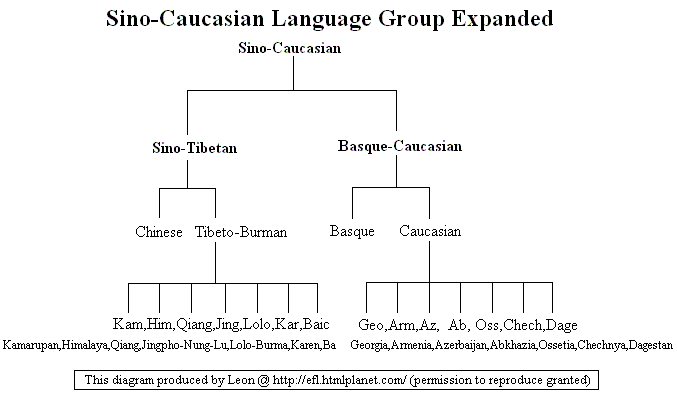
But it is a joke to group the
Han-Chinese language and Tibeto-Burman language group together, because they are
not linguistically related. It is also a joke to link the Basque language
and Caucasian language group together, because they are not linguistically
related either. AND, it is an even bigger joke to link the Sino-Tibetan
group with the Basque-Caucasian group, because you probably couldn't find a
single linguistic similarity.
For more information on the Basque
language, see (and click on) the link below:
http://www.cogs.susx.ac.uk/users/larryt/basque.html
For more information on the Sino-Tibetan
group, see (and click on) the link below:
http://stedt.berkeley.edu/html/STfamily.html
For more information on the Tungusic
language group, see (and click on) the link below:
http://www.dartmouth.edu/~trg/endangered.html
However, there is a theory that
some linguists have which I fancy, because it matches my own. The following
passage is from a web-article contained in the Sino-Tibetan Etymological
Dictionary and Thesaurus (STEDT):
The Proto-Sino-Tibetan (PST) homeland seems to have been somewhere on the Himalayan plateau, where the great rivers of East and Southeast Asia
(including the Yellow, Yangtze, Mekong, Brahmaputra, Salween, and
Irrawaddy Rivers) have their source. The time of hypothetical ST unity, when the Proto-Han (= Proto-Chinese) and Proto-Tibeto-Burman (PTB) peoples formed a relatively undifferentiated linguistic community, must have been at least as remote as the Proto-Indo-European period, perhaps around 4000 B.C.
The TB peoples slowly fanned outward along these river valleys, but only in the middle of the first millennium A.D. did they penetrate into peninsular Southeast Asia, where speakers of Austronesian (= Malayo-Polynesian) and Mon-Khmer (Austroasiatic) languages had already established themselves by prehistoric times. The Tai peoples began filtering down from the north at about the same time as the TB's. The most recent arrivals to the area south of China have been the Hmong-Mien (Miao-Yao), most of whom still live in China itself. |
But, Wait!
There's more!
|
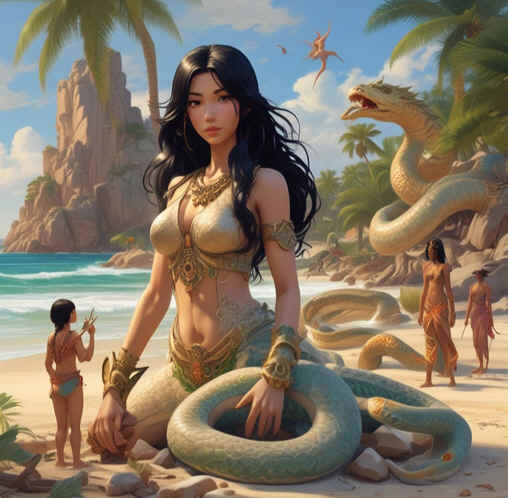
Creation
Myths Page
A
collection of myths from all over the world!!!!! It's
a must-see! (with lots of pictures, too!) For
instance, do you know who is pictured above? |
| |

English |
|

Spanish
|

Korean |

Mongolian |

Chinese |
|

Parents of
Homeschool
|
|

Halloween
|
|

Thanksgiving
|
|
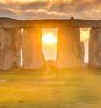
Winter Solstice
|
|

Christmas
|
|
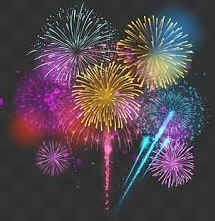
New Years
|
|
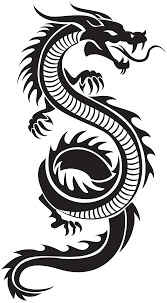
Chinese Lunar
New Year
|
|

Valentine's
|
|

|
|

Easter
|
|

All About
Dr. Seuss
|
|

Roald Dahl
|
|

Prepper's
Pen |
|

Ways to
Help
Leon's Planet
|
|